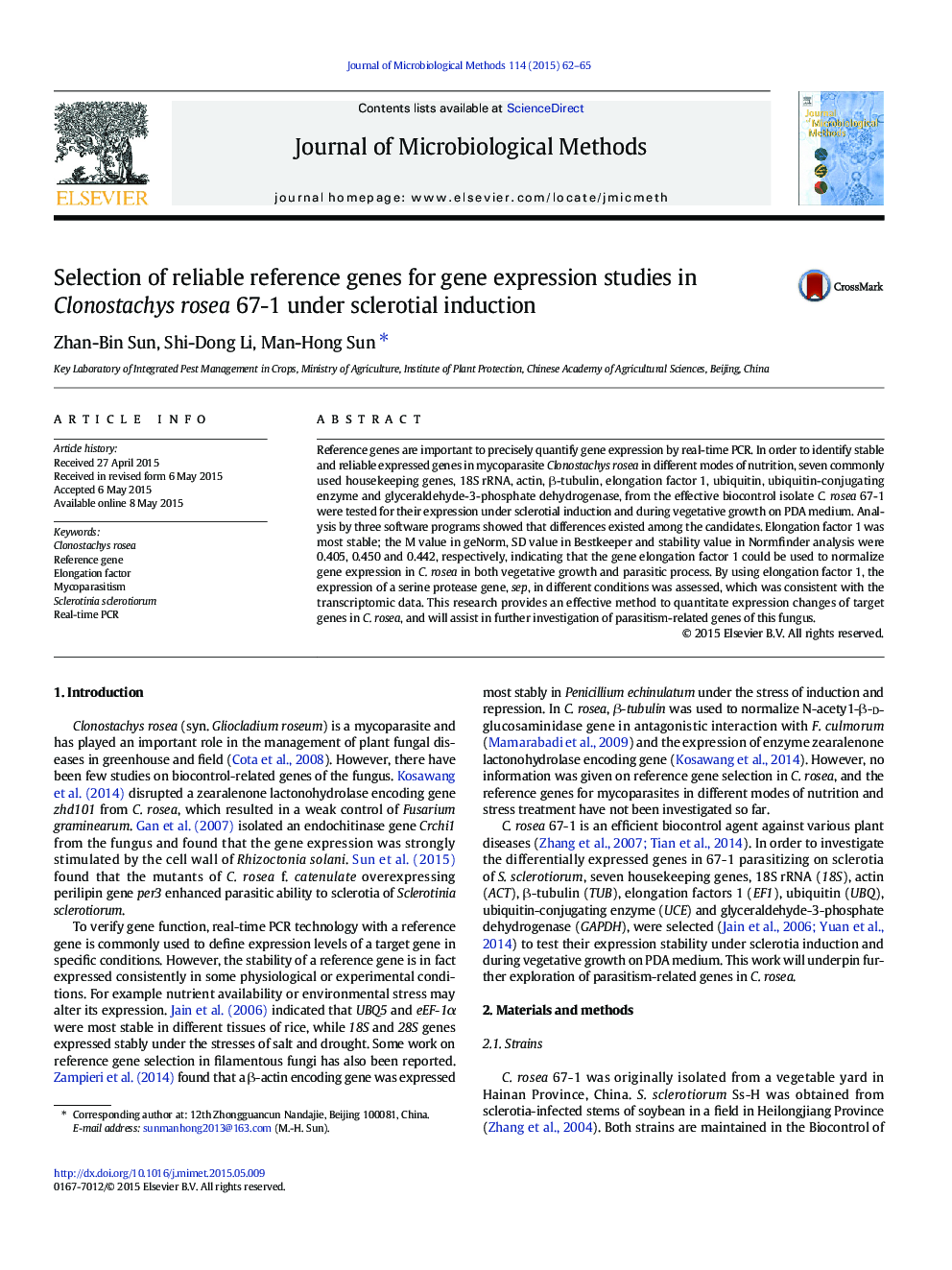| Article ID | Journal | Published Year | Pages | File Type |
|---|---|---|---|---|
| 2089821 | Journal of Microbiological Methods | 2015 | 4 Pages |
•This research provides an effective method to quantitate gene expression changes.•It first reports reference gene selection in mycoparasites with different life ways.•It reports reference gene selection in Clonostachys rosea for the first time.•Elongation factor gene is recognized as a most suitable internal marker in C. rosea.
Reference genes are important to precisely quantify gene expression by real-time PCR. In order to identify stable and reliable expressed genes in mycoparasite Clonostachys rosea in different modes of nutrition, seven commonly used housekeeping genes, 18S rRNA, actin, β-tubulin, elongation factor 1, ubiquitin, ubiquitin-conjugating enzyme and glyceraldehyde-3-phosphate dehydrogenase, from the effective biocontrol isolate C. rosea 67-1 were tested for their expression under sclerotial induction and during vegetative growth on PDA medium. Analysis by three software programs showed that differences existed among the candidates. Elongation factor 1 was most stable; the M value in geNorm, SD value in Bestkeeper and stability value in Normfinder analysis were 0.405, 0.450 and 0.442, respectively, indicating that the gene elongation factor 1 could be used to normalize gene expression in C. rosea in both vegetative growth and parasitic process. By using elongation factor 1, the expression of a serine protease gene, sep, in different conditions was assessed, which was consistent with the transcriptomic data. This research provides an effective method to quantitate expression changes of target genes in C. rosea, and will assist in further investigation of parasitism-related genes of this fungus.
Graphical abstractFigure optionsDownload full-size imageDownload as PowerPoint slide
